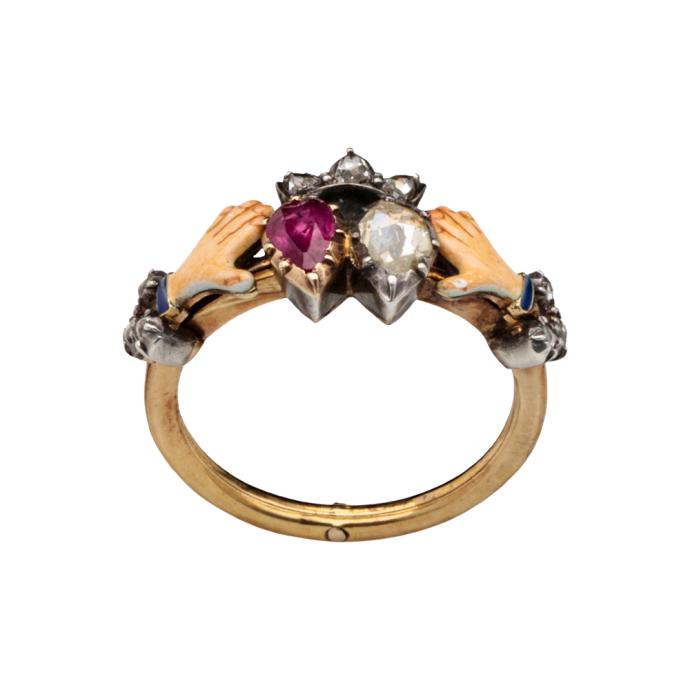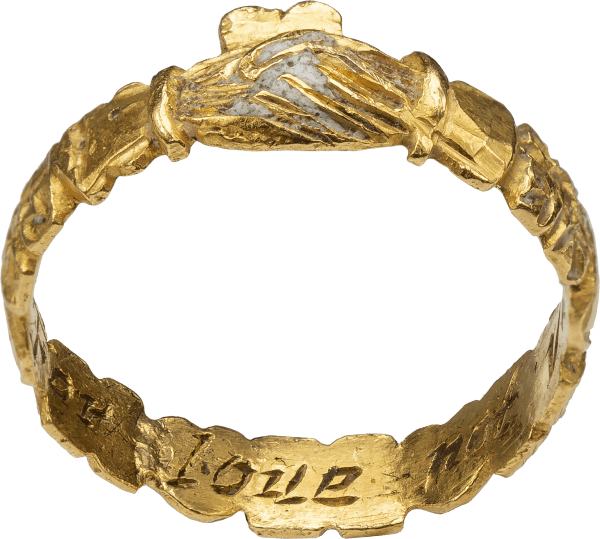


Gimmel Fede Ring with inscription “GAGE D’AMITIE”
, Probably England, c. 1750



Gimmel Fede Ring with inscription “GAGE D’AMITIE”
Description
This is a love ring with all the “bells and whistles” for a lucky couple. The symbolic pairing of a diamond and ruby, the Fede hands, a jeweled crown and three bands that are joined to make one; it does not get much better than this. Amid all these love symbols, there is more. Hidden inside the ring is a tiny engraved inscription reading, “GAGE D’AMITIE” or “A Token of Friendship”
This gold ring is composed of three connecting hoops attached by a hinge. Soldered onto the outer two are hands enameled in a natural skin tone with blue enameled, diamond-set cuffs. The central hoop supports two entwined hearts, composed of a Burmese ruby in a gold collet setting and a diamond set in silver. They are surmounted by a silver crown set with small diamonds. When worn, both hands appear to support the hearts, and, when opened, the middle hoop reveals on one side a finely engraved inscription: “GAGE D’AMITIE.” The crowned heart is just one of many elements reinforcing this ring’s message of love. Its circular form, here emphasized by the three hoops, alludes to the eternal bond in marriage.
In the eighteenth century the crowned heart became one of the most popular motifs in rings, where it served as an expression of love. But, of course, jewelry had been used as a means of communicating friendship, love, and desire long before that.
The crowned heart is just one of many elements reinforcing this ring’s message of love. Its circular form, here emphasized by the three hoops, alludes to the eternal bond in marriage. As a gimmel ring (from the Latin gemmelus, for “twin”), it unites multiple hoops as one. The multiple hoops conceal a hidden message, “GAGE D’AMITIE” (“token of friendship”), intended only for the eyes of the owner.
The motif of the hands holding the twinned hearts goes back to the mani in fede, the clasped right hands held in faith, though it is rare to find eighteenth-century examples of the motif. The choice of gemstones reinforces the message. Deep red in color, the ruby was traditionally the stone of passion and love, while the limpid diamond symbolizes virtue and constancy.1 The settings for the gemstones, with gold for the ruby and silver for the diamond, are quite characteristic of eighteenth-century practice. In particular, the silver enhances the sparkle and whiteness of the diamond.

